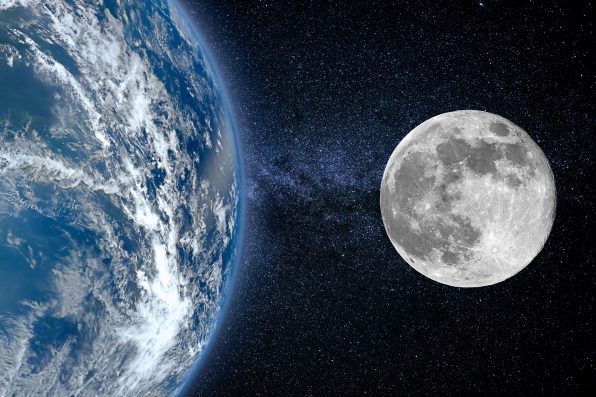Earth’s Second Moon Is Actually A Near-Earth Asteroid That Came From A Crater On The Far Side Of Our Planet’s Original Moon

The Earth has a “second moon,” and it appears to have originated from the original moon. This additional moon is a near-Earth asteroid called 2016 HO3, or Kamo’oalewa, which means “oscillating celestial object” in Hawaiian.
Scientists came to the conclusion after using computer models that revealed the asteroid came from the Giordano Bruno crater on the far side of the moon. The crater is 14 miles wide and is believed to be the youngest crater of its size on the moon’s surface.
Most near-Earth asteroids come from the Main Asteroid Belt between Mars and Jupiter’s orbits. But it is believed that Kamo’oalewa became dislodged after an asteroid roughly one mile in diameter struck the moon between one million and 10 million years ago, leaving the Giordano Bruno crater in its wake.
Kamo’oalewa is estimated to be approximately 130 to 330 feet across, which is around the size of the Statue of Liberty. It appears to orbit Earth when it is actually orbiting the sun, making it a quasi-satellite that moves in a one-to-one resonance in sync with Earth.
In 2016, Pan-STARRS, a system of telescopes in Hawaii designed to find near-Earth asteroids, discovered Kamo’oalewa. Currently, about 250,000 near-Earth asteroids are known.
In 2021, scientists from the University of Arizona studied images from the Large Binocular Telescope Observatory and noticed that Kamo’oalewa was similar to the lunar rock brought back to Earth by the Apollo missions in the 1970s.
They thought it could be a chunk of the moon because the spectrum, or the light it reflected, was not like any other near-Earth asteroid.
In the most recent study of the asteroid, the researchers simulated the impact that would have created and launched an object the size of Kamo’oalewa. It took weeks of computation on supercomputers for them to explore every possibility.
Overall, it is unlikely but possible for fragments of the moon caused by a collision event within the past few million years to make their way into orbits as Kamo’oalewa did.

Baranov – stock.adobe.com – illustrative purposes only
The moon is covered with craters from asteroids or meteorites, but the lunar material that gets kicked up by the impact usually just falls back onto the moon’s surface.
Next year, China will visit Kamo’oalewa for its first asteroid sampling mission, Tianwen-2. So, scientists will know more about the asteroid soon enough. It will be the first-ever mission to study an asteroid that is tens of meters in size.
The Giordano Bruno crater is on the far side of the moon, which we can’t see. The near side is what’s visible to us. As the moon orbits the Earth, the sun lights up half of it, and that’s when we see the different phases of the moon.
Kamo’oalewa is expected to orbit the Earth’s surrounding area for millions of years.
Sign up for Chip Chick’s newsletter and get stories like this delivered to your inbox.
More About:News





